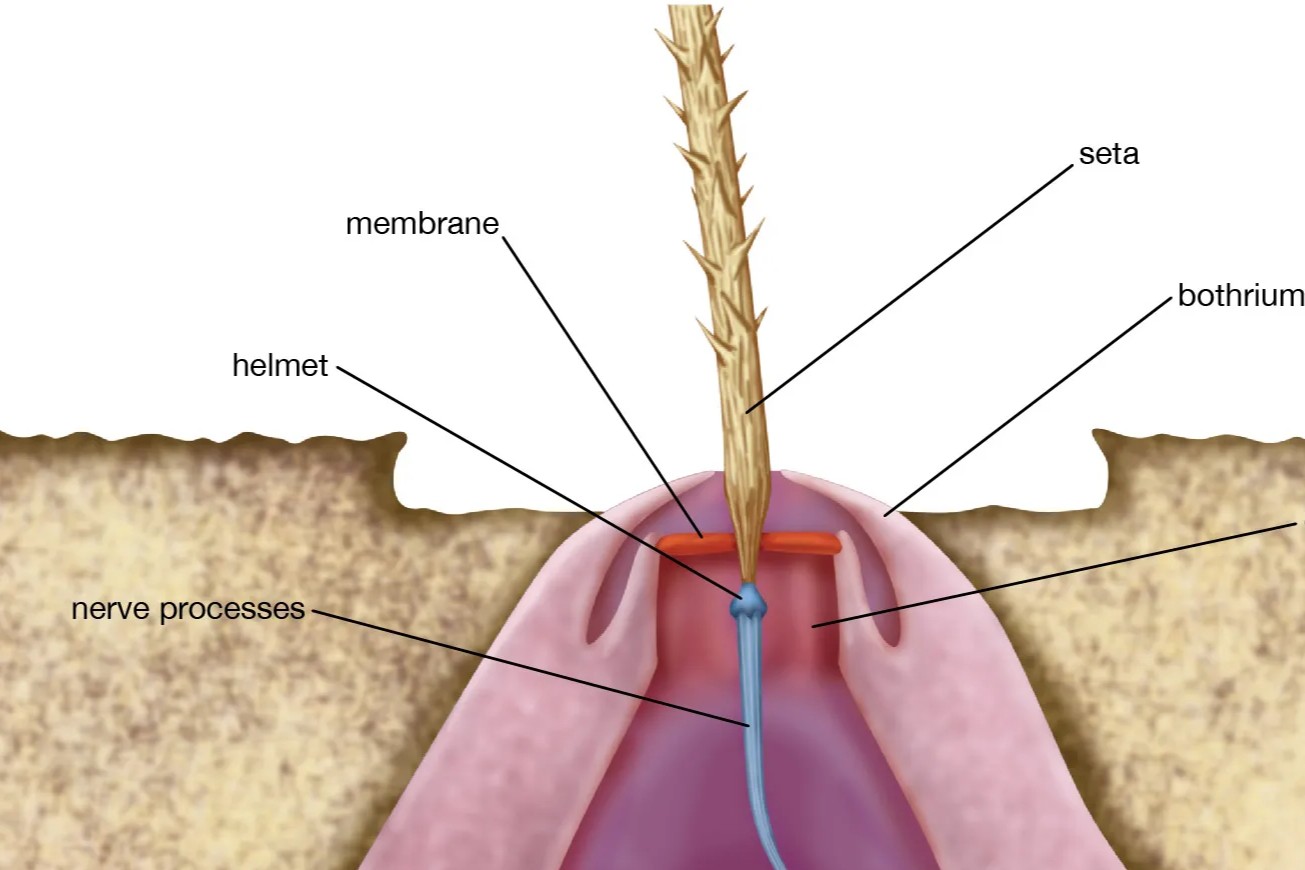
Mechanoreception is the ability to sense mechanical changes in the environment, like touch, pressure, and vibration. Ever wondered how you can feel a gentle breeze or the texture of a rough surface? Mechanoreceptors in your skin and other tissues make this possible. These specialized cells convert mechanical stimuli into electrical signals, which your brain then interprets. This process is crucial for everyday tasks, from holding a pencil to walking without stumbling. Understanding mechanoreception can help us appreciate how our bodies interact with the world. Ready to learn some fascinating facts about this incredible sense? Let's dive in!
What is Mechanoreception?
Mechanoreception is the ability of an organism to detect and respond to mechanical stimuli such as touch, pressure, vibration, and sound. This sensory system is crucial for survival, enabling creatures to interact with their environment.
- Mechanoreceptors are specialized cells that detect mechanical changes in the environment.
- These receptors are found in various organisms, from simple invertebrates to complex mammals.
- In humans, mechanoreceptors are located in the skin, muscles, joints, and inner ear.
- The sense of touch relies heavily on mechanoreceptors in the skin.
- There are four main types of mechanoreceptors in human skin: Merkel cells, Meissner's corpuscles, Ruffini endings, and Pacinian corpuscles.
Types of Mechanoreceptors
Different types of mechanoreceptors respond to different kinds of mechanical stimuli. Each type has a unique structure and function.
- Merkel cells are slow-adapting receptors that detect light touch and texture.
- Meissner's corpuscles are fast-adapting receptors sensitive to light touch and low-frequency vibrations.
- Ruffini endings detect skin stretch and contribute to the perception of object manipulation.
- Pacinian corpuscles are sensitive to deep pressure and high-frequency vibrations.
- Hair follicle receptors detect hair movement and are found in hairy skin.
Mechanoreception in Animals
Animals rely on mechanoreception for various behaviors, including hunting, avoiding predators, and navigating their environment.
- Fish use mechanoreceptors in their lateral lines to detect water currents and vibrations.
- Spiders have specialized mechanoreceptors on their legs to sense vibrations in their webs.
- Birds have mechanoreceptors in their beaks and feet to detect prey and navigate.
- Elephants use mechanoreceptors in their trunks and feet to communicate through ground vibrations.
- Bats rely on mechanoreceptors in their wings to fine-tune their flight and catch prey.
Mechanoreception and Human Health
Mechanoreception plays a vital role in human health and well-being. It affects everything from daily activities to complex medical conditions.
- Loss of mechanoreception can lead to balance issues and increased risk of falls.
- Diabetic neuropathy can damage mechanoreceptors, leading to numbness and pain.
- Physical therapy often involves exercises to improve mechanoreception and proprioception.
- Mechanoreceptors in the inner ear are crucial for maintaining balance and spatial orientation.
- Some chronic pain conditions are linked to malfunctioning mechanoreceptors.
Mechanoreception in Technology
Understanding mechanoreception has led to advancements in technology, particularly in robotics and prosthetics.
- Robotic hands equipped with artificial mechanoreceptors can perform delicate tasks.
- Prosthetic limbs with mechanoreceptive sensors provide users with a sense of touch.
- Haptic feedback technology in gaming and virtual reality relies on principles of mechanoreception.
- Wearable devices with mechanoreceptive sensors can monitor health metrics like heart rate and movement.
- Advances in mechanoreception research are paving the way for more intuitive human-machine interfaces.
Fascinating Facts About Mechanoreception
Mechanoreception is a field full of intriguing discoveries and ongoing research.
- Some insects have mechanoreceptors that can detect sound waves, allowing them to "hear" without ears.
- The star-nosed mole has over 25,000 mechanoreceptors in its nose, making it incredibly sensitive to touch.
- Mechanoreceptors can adapt to constant stimuli, a process known as sensory adaptation.
- Certain plants have mechanoreceptors that allow them to respond to touch, such as the Venus flytrap.
- Mechanoreception research is helping scientists develop better treatments for sensory disorders.
The Future of Mechanoreception Research
The study of mechanoreception continues to evolve, with exciting potential applications on the horizon.
- Researchers are exploring how mechanoreception can be used to develop better tactile sensors for robots.
- Advances in nanotechnology are enabling the creation of ultra-sensitive mechanoreceptive devices.
- Understanding mechanoreception could lead to new treatments for conditions like tinnitus and vertigo.
- Scientists are investigating how mechanoreception influences emotional and psychological well-being.
The Fascinating World of Mechanoreception
Mechanoreception is a vital part of how living beings interact with their environment. From the delicate touch of a butterfly landing on a flower to the complex sensory systems in humans, mechanoreceptors play a crucial role. They help us feel pressure, vibrations, and textures, allowing us to navigate our world with precision.
Understanding mechanoreception not only highlights the complexity of biological systems but also opens doors for advancements in technology and medicine. Imagine prosthetics that can mimic the sense of touch or robots that can handle objects with the same delicacy as human hands.
So, next time you feel the gentle breeze or the rough bark of a tree, remember the incredible network of mechanoreceptors at work. They’re not just sensors; they’re the unsung heroes of our sensory experiences, making life richer and more interactive.
Was this page helpful?
Our commitment to delivering trustworthy and engaging content is at the heart of what we do. Each fact on our site is contributed by real users like you, bringing a wealth of diverse insights and information. To ensure the highest standards of accuracy and reliability, our dedicated editors meticulously review each submission. This process guarantees that the facts we share are not only fascinating but also credible. Trust in our commitment to quality and authenticity as you explore and learn with us.
